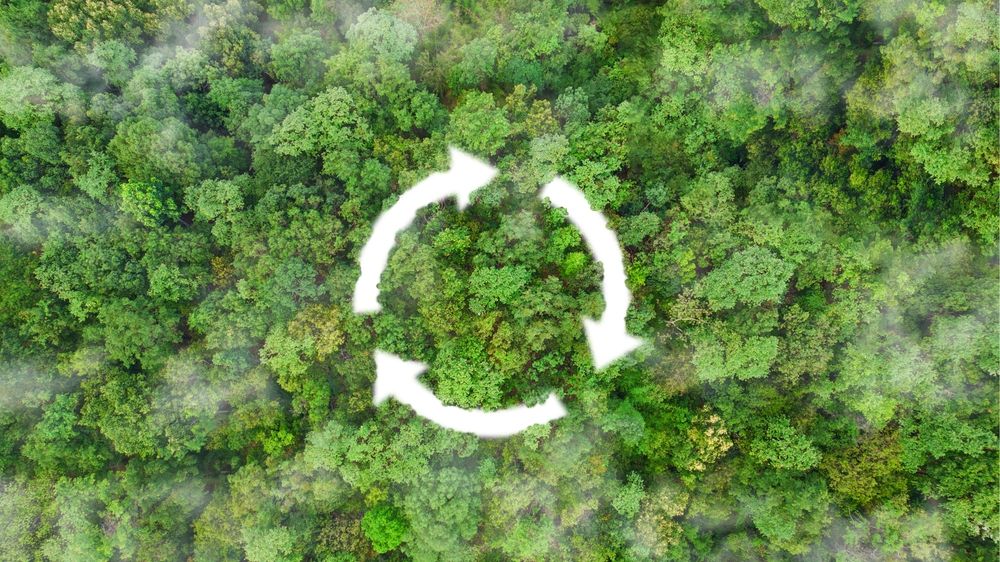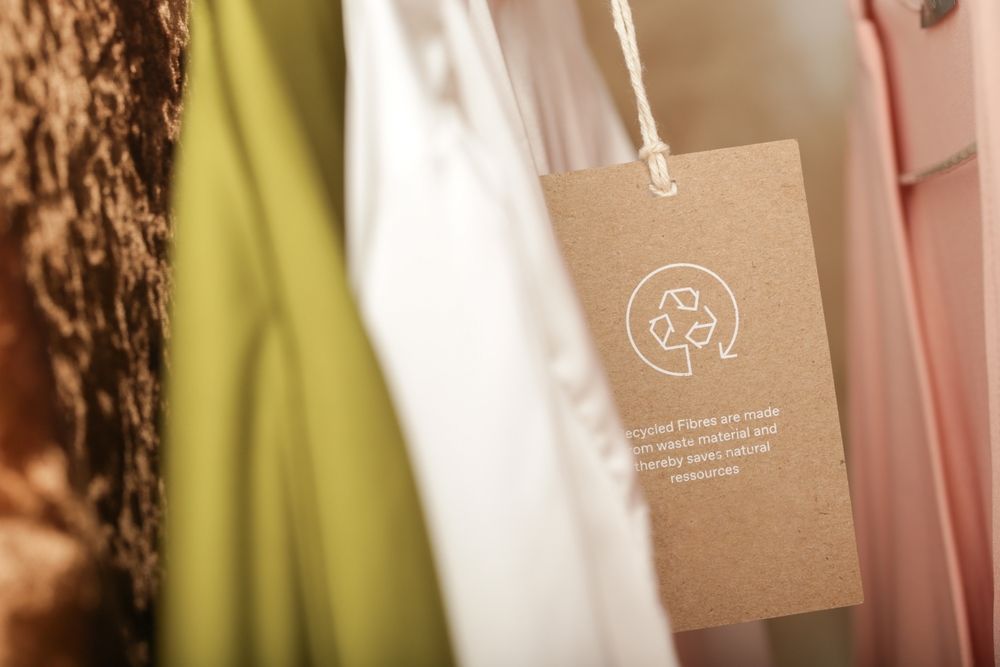Building a Circular Economy: Best Practices for Retailers

In recent years, the concept of a circular economy has gained significant traction, especially within the retail sector. A circular economy aims to redefine growth by focusing on positive societal benefits, minimising waste, and making the most of resources. For the retail industry, adopting a circular economy model is crucial in driving sustainable retail practices, reducing environmental impact, and meeting the growing demand for green retailing. As sustainability in the retail industry becomes increasingly important, retailers must adopt best practices to ensure they contribute to a circular economy.
In this article, we will explore the significance of building a circular economy for retail sustainability, outline best practices for retailers, and examine how sustainable retailers can thrive by embracing this model.
What is a Circular Economy?
A circular economy is a systemic approach to economic development that is regenerative by design. Unlike the traditional linear economy — where products are made, used, and then discarded — the circular economy focuses on keeping products, materials, and resources in use for as long as possible. This is achieved by rethinking how products are designed, manufactured, and consumed, with an emphasis on reducing waste and ensuring materials can be reused, recycled, or returned to the environment safely.
The circular economy model aligns perfectly with the goals of sustainable retail. It helps retailers to reduce waste, lower carbon emissions, and optimise resource use, all while delivering products and services that meet the needs of eco-conscious consumers.
The Importance of Retail Sustainability
Sustainability in retail is no longer a niche concern but a critical aspect of modern business strategy. The growing awareness of climate change, environmental degradation, and resource scarcity has compelled retailers to prioritise sustainability. Consumers are increasingly demanding that the brands they support embrace green retailing, which is forcing retailers to shift towards more sustainable practices.
Retail sustainability is about much more than just offering eco-friendly products. It encompasses a retailer's entire value chain, from sourcing raw materials responsibly to minimising waste during production and ensuring that packaging and products can be reused or recycled. For sustainable retailers, adopting a circular economy model is key to ensuring long-term success while contributing to a healthier planet.
Best Practices for Retailers in Building a Circular Economy
Building a circular economy within the retail sector requires a comprehensive approach that considers the entire lifecycle of products. Here are some of the best practices that sustainable retailers can adopt to support the transition to a circular economy:
1. Design for Durability and Reusability
One of the cornerstones of a circular economy is designing products that last longer and can be reused or repurposed. For sustainable retailers, this means focusing on durability when developing new products. By designing products that have a longer lifespan and can be reused multiple times, retailers can reduce the demand for new materials and lower their environmental impact.
Furthermore, product design should consider the end of the product’s life. Can it be repaired easily? Can it be disassembled and recycled? By addressing these questions early in the design process, retailers can contribute to a more circular system.
2. Promote Product Life Extension
Another critical aspect of building a circular economy is extending the life of products through reuse, refurbishment, and remanufacturing. Retailers can encourage customers to return used products that can be repaired or refurbished and then resold. This practice not only reduces waste but also offers a cost-effective solution for consumers who are looking for more sustainable options.
Some retailers are already embracing this model by launching trade-in programmes, where customers can return used items in exchange for discounts or store credit. By promoting the reuse of products, retailers can align with consumer demand for sustainability in retail while driving customer loyalty.
3. Implement Closed-Loop Supply Chains
A closed-loop supply chain is a system in which materials are continuously reused, recycled, or returned to the production process. Sustainable retailers can implement closed-loop systems by designing products with materials that can be easily recycled or repurposed after use. For example, many fashion brands are now creating clothing made from recycled textiles, while electronics retailers are offering take-back programmes for old devices that can be refurbished or broken down for parts.
By adopting closed-loop supply chains, retailers can significantly reduce the environmental impact of their operations and contribute to a circular economy. This approach also ensures that fewer resources are wasted, as materials can be reintroduced into the supply chain instead of being discarded.
4. Minimise Packaging Waste
Packaging is a significant contributor to waste in the retail industry, making it a crucial area for retailers to address when building a circular economy. Sustainable retailers can reduce their packaging waste by opting for minimalistic designs, using materials that are easily recyclable, and offering reusable packaging solutions.
In addition to reducing waste, retailers can engage with customers by educating them on how to properly recycle packaging materials. Some sustainable retailers are also exploring innovative packaging solutions, such as compostable or biodegradable packaging, which helps reduce the environmental impact.
5. Encourage Responsible Consumption
Retailers play a vital role in promoting responsible consumption by educating their customers about the environmental impact of their purchasing decisions. By offering products that align with green retailing principles and communicating the benefits of sustainable choices, retailers can encourage customers to make more environmentally friendly purchases.
Many sustainable retailers are already adopting transparency strategies, where they provide detailed information about the materials used, the production processes involved, and the environmental impact of their products. This not only helps to build trust with consumers but also empowers them to make informed purchasing decisions that contribute to a circular economy.
6. Encourage Collaboration with Suppliers and Partners
Achieving retail sustainability and building a circular economy requires collaboration throughout the entire supply chain. Sustainable retailers must work closely with suppliers and manufacturers to ensure that sustainable practices are adopted at every stage of the product lifecycle. This includes sourcing raw materials responsibly, ensuring fair labour practices, and minimising environmental impact during production.
By creating strong partnerships with suppliers and manufacturers, retailers can create more sustainable products and contribute to a circular economy. Retailers can also collaborate with third-party organisations to develop certification programmes, which provide transparency and accountability in their sustainability efforts.
7. Leverage Technology for Waste Reduction
Technology plays a crucial role in enabling retailers to transition towards a circular economy. Data analytics, for example, can help retailers track the lifecycle of products, monitor waste levels, and identify areas for improvement. By leveraging technology, retailers can optimise their operations and reduce waste.
Additionally, blockchain technology is being explored by some retailers to enhance transparency and traceability in their supply chains. This allows retailers to provide consumers with detailed information about the sustainability of the products they purchase and verify that products meet sustainability standards.

The Benefits of Embracing a Circular Economy for Sustainable Retail
Adopting circular economy practices offers numerous benefits for sustainable retailers. These include:
1. Reduced Environmental Impact
By minimising waste, reducing resource consumption, and promoting the reuse and recycling of materials, retailers can significantly lower their carbon footprint. This not only contributes to global sustainability efforts but also ensures that retailers are compliant with government regulations and environmental standards.
2. Increased Brand Loyalty
Consumers today are increasingly aligning their purchasing decisions with their values. By adopting circular economy practices, retailers can enhance their reputation as leaders in retail sustainability. This helps build brand loyalty, as consumers are more likely to support retailers that prioritise environmental responsibility.
3. Cost Savings
Implementing a circular economy can lead to significant cost savings for retailers. By reducing waste and recycling materials, retailers can lower their waste disposal costs and decrease the need for new raw materials. In addition, offering refurbished or reused products can open up new revenue streams while reducing production costs.
4. Compliance with Regulations
Governments worldwide are implementing stricter regulations to encourage sustainability in the retail industry. Retailers that adopt circular economy practices will be better positioned to comply with these regulations and avoid penalties, ensuring long-term business viability.
5. Resilience in the Face of Resource Scarcity
As natural resources become scarcer, adopting a circular economy can help retailers ensure the longevity of their supply chains. By reusing materials and promoting sustainable practices, retailers can reduce their dependence on finite resources and build resilience in an uncertain future.
Building a circular economy is essential for driving sustainability in retail. As consumer demand for eco-friendly products grows and governments introduce stricter environmental regulations, retailers that embrace circular economy practices and avoid greenwashing will be better positioned for long-term success. By designing durable, reusable products, minimising packaging waste, and fostering collaboration across the supply chain, sustainable retailers can lead the way towards a more sustainable future.
Adopting circular economy principles not only benefits the environment but also helps retailers enhance their brand image, reduce costs, and build stronger relationships with consumers. As the retail industry continues to evolve, green retailing and circular economy practices will become critical components of any retailer’s sustainability strategy.
If you have retail insights, tips, or success stories to share, we’re inviting you to contribute to Autumn Fair.
Bring fresh perspectives to our growing community. If you’re a professional, thought leader or simply have valuable knowledge to offer, we want to hear from you!
Join us in covering the latest trends, innovations and strategies shaping retail.
Ready to contribute? Get in touch today!

)
)
)
)
)
)
)
)
)
)
)
)
)
)
)
)
)
)
)
)
)
)
)
)
)
)
)